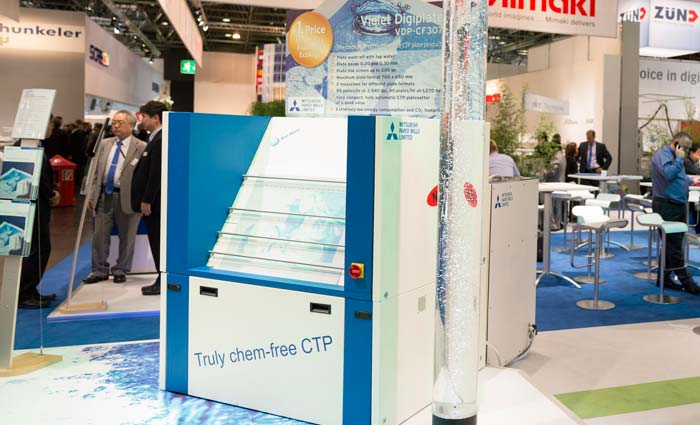
The Violet Digiplater computer-to-plate (CTP) system runs inline with the Digiplater VDP-CF3070 water recycling system, which contains one normal filter tank as well as two “biological degradation” tanks.
The four-up platesetter runs photopolymer plates that are water washable and do not require gumming.
After being imaged on the CTP, the unexposed photopolymer is washed off with normal tap water.
Stefan Werner, sales manager, graphic art material, at Mitsubishi International, told ProPrint: “People said to us ‘if you are producing chemicals, you can’t call yourself chemical-free’.”
Mitsubishi has overcome this with a one-of-a-kind processing system in which biological organisms “eat” the photopolymer waste. “Blue water goes in, clear water comes out,” said Werner.
He said rival products calling themselves chemistry-free either used gumming or washed the plate on the press, which contaminated the fount solution and meant there was poorer quality control.
The plates, which come in B2 and B3 formats, are suitable for runs up to 20,000 impressions with resolutions of up to 2,450dpi and screening of up to 200 lines per inch.
The Digiplater outputs 20 plates per hour, exposed, punched, washed, dried and cut to format, so they are ready for immediate printing, according to Mitsubishi.
The platesetter is built by Krause, which has a strong presence in the newspaper market. This meant the Digiplater was a reliable product, said Werner.
Mitsubishi expects to start beta-testing the Digitplater later this year.
Comment below to have your say on this story.
If you have a news story or tip-off, get in touch at editorial@sprinter.com.au.
Sign up to the Sprinter newsletter
